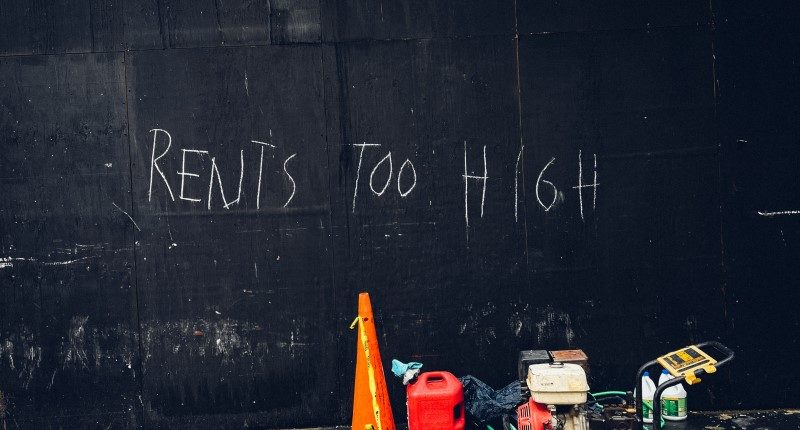- Anglicare WA released their 2021 Rental Affordability Snapshot
- Vacancy rates are tightening and prices are set to rise by as much as 17%
- Anglicare WA recommends social housing, but leaves out red tape reduction
Leading not-for-profit organisation Anglicare WA has released their 2021 Rental Affordability Snapshot.
The report captures the number of affordable and suitable homes available for Australians on low incomes. Housing is considered affordable when it costs less than 30% of a household’s income.
So, what is the verdict for WA’s rental market?
Unfortunately, the results are not good.
What the numbers show
The report found 3,695 private rentals in the Perth Metro area, South West and Great Southern, and the North West – roughly half the number of available private rentals in last year’s snapshot.
The rental market in WA has significantly tightened with vacancy rates of less than 1% and price rises of new tenancies by as much as 17%.
Rental stress continues to become a more prevalent issue. Last year’s Coronavirus Supplement increased affordability for many, but without it many are now priced out of the market.
The 2021 Snapshot found zero affordable rentals in WA for young people receiving the Youth Allowance. The only affordable accommodation for the thousands of JobSeeker recipients was one room in one share house in the whole of Perth. Families are forced into overcrowding.
There can be no doubt of the dire hardship many low income WA renters are facing right now.
What are the solutions?
But what are the solutions Anglicare WA proposes?
Firstly, the organisation said what needs to change is “protection from unreasonable and excessive rent increases.”
This sounds a lot like rent control, a policy that has been covered on The Property Tribune before.
Despite the best intentions of organisations like Anglicare WA and the Greens Party (who recently tried to pass a rent control bill in Tasmania) to help those most in need, rent controls almost always produce unintended consequences in the long-run (see this article).
As with most goods and services, the rental housing market is a function of supply and demand. What rent control does – as is the case with all price ceilings – is artificially push down the price of rent below what would have otherwise prevailed in a free market. This creates a phenomenal rise in the quantity of rentals demanded while discouraging the quantity of rentals supplied.
The immediate result is a shortage of rental accommodation. This creates long waiting lists. The result is that rent control is superficially great for the minority who were lucky enough to already occupy units, but this comes at the expense of new rental seekers, who must now compete for the limited remaining stock.
In terms of solving supply side problems, Anglicare’s report argues there is inadequate social housing in WA to meet growing demand. Therefore, they are calling on the Government to create a net increase in social housing of at least 15,000 dwellings by 2030.
Everybody’s Home, a national campaign to end homelessness is also supporting the call for social housing.
“We urgently need to build more social and affordable housing so that all Australians have the prospect of a healthy and stable life. It’s not much to ask.”
Kate Colvin, National spokesperson for Everybody’s Home
There is nothing wrong with Anglicare’s policy per se. It’s what is missing from their recommendations on increasing supply that is extremely noticeable.
Arguably red tape reduction is key
There are no recommendations regarding red tape reduction.
Arguably, a conversation to fix the issue of rental supply cannot occur without first considering the red tape surrounding the housing and rental market, such as onerous land approvals and zoning laws (see this article).
A 2018 Reserve Bank of Australia study found that zoning laws have contributed to the rise in apartment prices across the nation, particularly in Sydney. These effects have been exacerbated over the years due to the existing restrictions binding more tightly as demand continues to increase.
The public policy think tank, the Grattan Institute in their latest Housing Affordability Report found that “over much of the last two decades, constraints have limited new supply that would normally respond to higher demand. Planning rules that restrict the construction of more homes in inner and middle-ring suburbs have dragged on development. Not enough medium-density housing, such as mid-rise and low-rise apartments, townhouses, and terraces, has been built in the established suburbs of our major cities closest to most new jobs and existing infrastructure. Although there have been more high-rise apartments, overall dwelling supply has not matched population growth, resulting in higher prices.”
So in terms of public housing, Anglicare WA has more than adequately addressed that as a major part of their recommendations for the Government to follow.
However, it can be strongly argued that red tape reduction should also be a key focus of rental housing policy, if there is to be any healthy progress in the long run.








